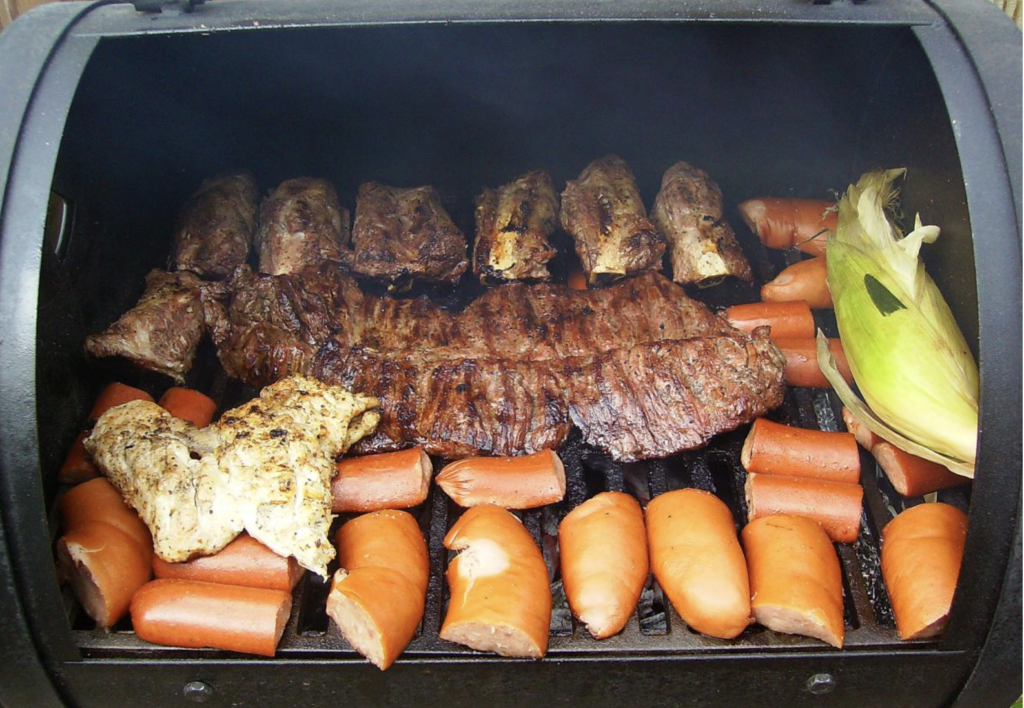You might think grilling is simply cooking outdoors, but the combination of heat source, tools and proteins we use when grilling can create some easy-to-correct cooking errors. Follow these tips to grill the perfect steak, chicken or burgers this summer.

Choosing the Wrong Cut
It doesn’t matter how you prep and cook your steaks and burgers if you don’t choose the right beef. The cheaper the cut, the tougher it will be, the lower the temperature you’ll need to use and the longer you’ll need to cook the steak. Good grilling steaks include porterhouse, T-bone, New York strip, filet and rib eye. You can choose other cuts, but make sure you bone up on how to prepare them before cooking, and how to correctly grill them.
Cooking Cold Proteins
You obviously don’t want your proteins sitting in the sun for long periods, but taking them right from the fridge or cooler and putting them on the grill can create a less-than-perfect steak, burger or piece of chicken.
Think about what would happen if you put a frozen steak on the grill – the outside would burn while the inside would remain rock hard. Take your proteins out of the refrigerator or cooler about 15 minutes before you’re ready to cook them to let them get closer to room temperature.
The Grill is Too Hot
When coals are stacked all the way up to the grill surface, or they are still flaming, you can easily burn your proteins. The Weber Kettle company has an easy test for knowing when your grill is at high heat or medium-high heat. Place the palm of your hand 5 inches from the grilling surface.
If you have to pull it away (because your hand starts to hurt) in less than four seconds, you have high heat. If you have to move your hand between five and seven seconds, you’re at medium heat. If you can keep your hand there for eight to 10 seconds, your grill is at low heat.
Using Forks vs. Tongs
When you poke meat or fowl with tongs or forks, juice from the protein runs out of the protein, creating a dryer steak, burger or piece of chicken. Use tongs to place proteins on the grill, turn them and take them off.
Too Much Touching
Many people press down on meats to help them cook faster or to prevent the inside from being rare. This is probably the biggest reason grilled foods turn our chewy and rubbery. Once you put your steak, chicken or burger on the grill, leave it alone. Prodding, poking, pressing and pushing squeezes juices out of the meat, leaving it drier and tougher.
You can make a steak in one of two ways, in terms of turning it. Place the steak on the grill for one minute to create a sear and seal in the juices. Using tongs, turn the steak over and then leave it alone while it cooks on that side. Let it cook for approximately four to 10 minutes, depending on how thick the meat is, how hot your grill is, and if you want it more rare or well done.
After you’ve let it cook on this side, turn it one more time and finish on the other side to your desired temperature. To get those nice cross-grill marks on a steak, turn the steak sideways from its original position when you flip it the second time.
The other option for turning a steak is to place it on the grill, let it cook for half the time you plan on cooking it, and then turn it over and let it finish on the other side. Remember, when you remove a steak from the grill, it will continue to cook on the inside, especially if you place it under foil while you’re waiting to serve it.
Don’t keep turning hamburgers and don’t use the side of closed tongs to pat, flatten or press chicken. Leave. It. Alone.
Give it a Rest
When you watch cooking infomercials, you usually see the chef or pitchman take a steak or turkey or pork roast out of the cooking gadget and immediately slice it open. Out runs lots of juice, making your mouth water. But do you really want the juice from your steaks and chicken to run out, leaving you with a great-tasting . . . plate?
When you heat proteins, the juices bubble to the surface. If you let the beef, fowl or pork sit for a few minutes (called resting), these juices will absorb back into the meat. Remember your grandma driving you crazy by letting a large roast or turkey rest for an hour after they took it out of the oven?
When you grill this summer, give your steaks and chicken a few minutes to rest before you cut them open. For a big steak, give it more than five minutes, covering it in foil to keep it warm. If you’ve got plump chicken breasts, give them at least five minutes, covered, as well.
Burgers are fine to eat right off the grill because the bun will soak up most of the escaping juices, and it takes a few minutes to prepare the sandwich and dish up your sides. If you’ve made full-pound hamburgers, it can’t hurt to let them sit for a few minutes.
Saucing Too Early
A sauce is different than a marinade. A marinade is intended to get into the protein well before it’s cooked to help break down tough tissue. A sauce is added to proteins to add flavor. If you’re using a barbecue, jerk, hoisin or other sauce for flavoring your proteins, don’t put the sauce on before you start grilling. Only add a sauce during the last five minutes of the cooking process to help it get warm and stay on after you serve it.